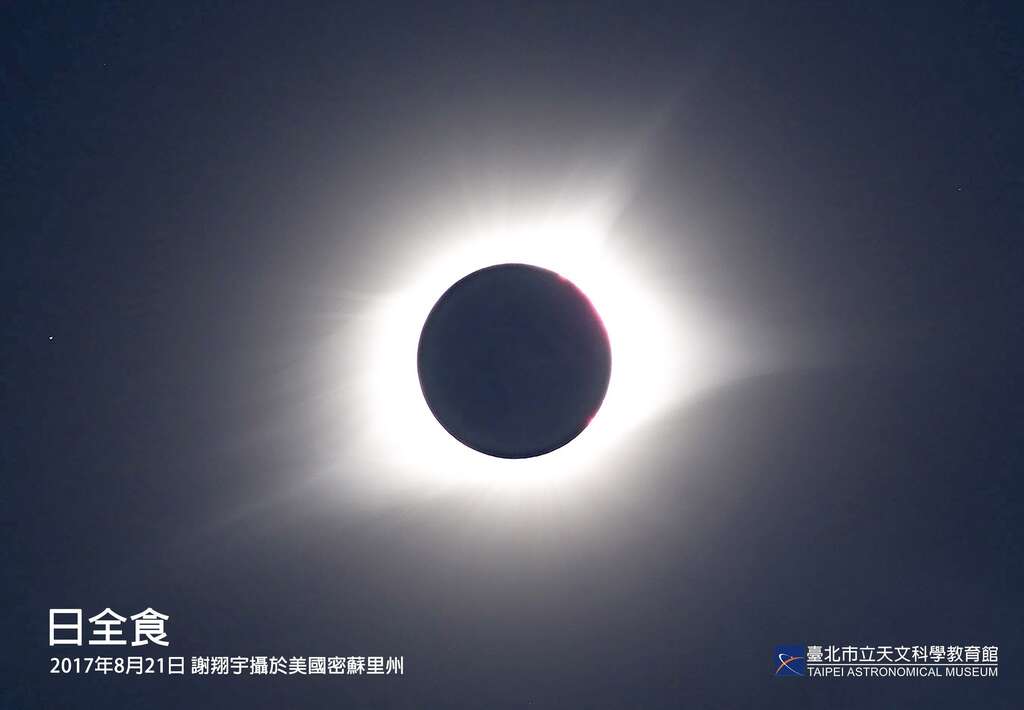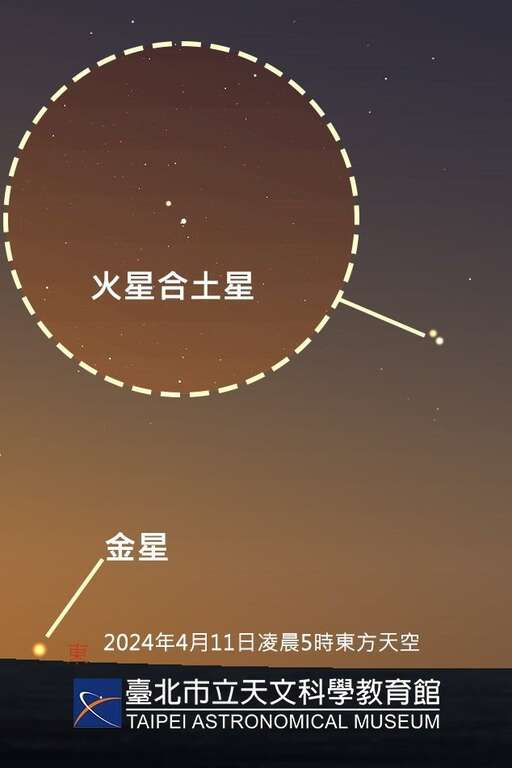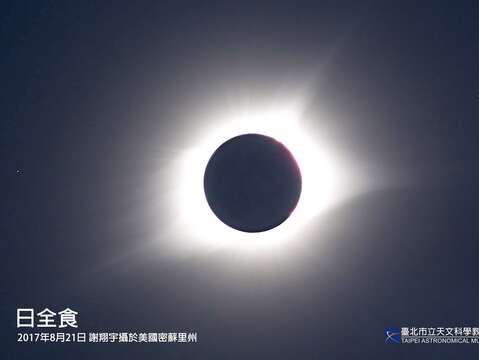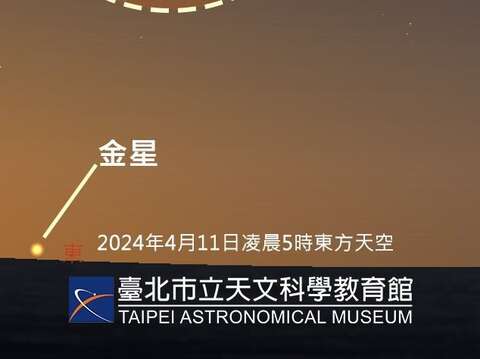Post date:2024-04-12
Updates:2024-04-12
183
The warm April is a good time for stargazing. There are so many eye-opening astrology events in April, including a rare total solar eclipse, bright comets visible to the naked eye, the Lyrid meteor shower which is famous for its fireballs, and nova that may erupt at any time.

In the early morning on Tuesday, April 9, Taiwan time, the total solar eclipse will occur in the America. Within four minutes of the total eclipse, the ten stars and comets will appear in the darkening sky. Taipei Astronomical Museum will compile information and livestream to share with the public.
Besides, "Mars conjunct Saturn" will occur in the eastern sky before dawn on April 11 (Thursday) and "Antares conjunct the moon" will be in the early morning of April 27 (Saturday). Then, the observers can see "Mars conjunct Neptune" at dawn on April 29 (Monday) ”. The conjunct stars are all very close and worth seeing.
One of the few comets visible to the naked eye in the next five years, Comet 12P/Pons-Brooks (12P/Pons-Brooks) will reach perihelion on Sunday, April 21, when its brightness reach about 4th magnitude, and appear after sunset near the western horizon. People can use the binoculars for observation.

The Lyrid Meteor Shower tends to peak on Monday, April 22. About 18 meteors are estimated every hour. The meteor shower is famous for its large number of bolides. Although the full moon is seen close up, it faces away from moon in the second half of night. Many bolides with astonishing brightness can be seen from the right direction.
There are many chances to discover “nova” in April! According to predictions, T Corona Borealis, a star with a cycle of 80 years, will erupt between March and September. At that time, its brightness will suddenly increase by nearly 1,600 times, changing from a 10th-magnitude faint star that was originally invisible to the naked eye. As a 2nd-magnitude star, the star is even brighter than Polaris, and is the brightest nova since 1975.

In the early morning on Tuesday, April 9, Taiwan time, the total solar eclipse will occur in the America. Within four minutes of the total eclipse, the ten stars and comets will appear in the darkening sky. Taipei Astronomical Museum will compile information and livestream to share with the public.
Besides, "Mars conjunct Saturn" will occur in the eastern sky before dawn on April 11 (Thursday) and "Antares conjunct the moon" will be in the early morning of April 27 (Saturday). Then, the observers can see "Mars conjunct Neptune" at dawn on April 29 (Monday) ”. The conjunct stars are all very close and worth seeing.
One of the few comets visible to the naked eye in the next five years, Comet 12P/Pons-Brooks (12P/Pons-Brooks) will reach perihelion on Sunday, April 21, when its brightness reach about 4th magnitude, and appear after sunset near the western horizon. People can use the binoculars for observation.

The Lyrid Meteor Shower tends to peak on Monday, April 22. About 18 meteors are estimated every hour. The meteor shower is famous for its large number of bolides. Although the full moon is seen close up, it faces away from moon in the second half of night. Many bolides with astonishing brightness can be seen from the right direction.
There are many chances to discover “nova” in April! According to predictions, T Corona Borealis, a star with a cycle of 80 years, will erupt between March and September. At that time, its brightness will suddenly increase by nearly 1,600 times, changing from a 10th-magnitude faint star that was originally invisible to the naked eye. As a 2nd-magnitude star, the star is even brighter than Polaris, and is the brightest nova since 1975.
 Solar eclipses, comets, meteor showers, and nova celestial events all in April Astronomical Calendar
Solar eclipses, comets, meteor showers, and nova celestial events all in April Astronomical Calendar




